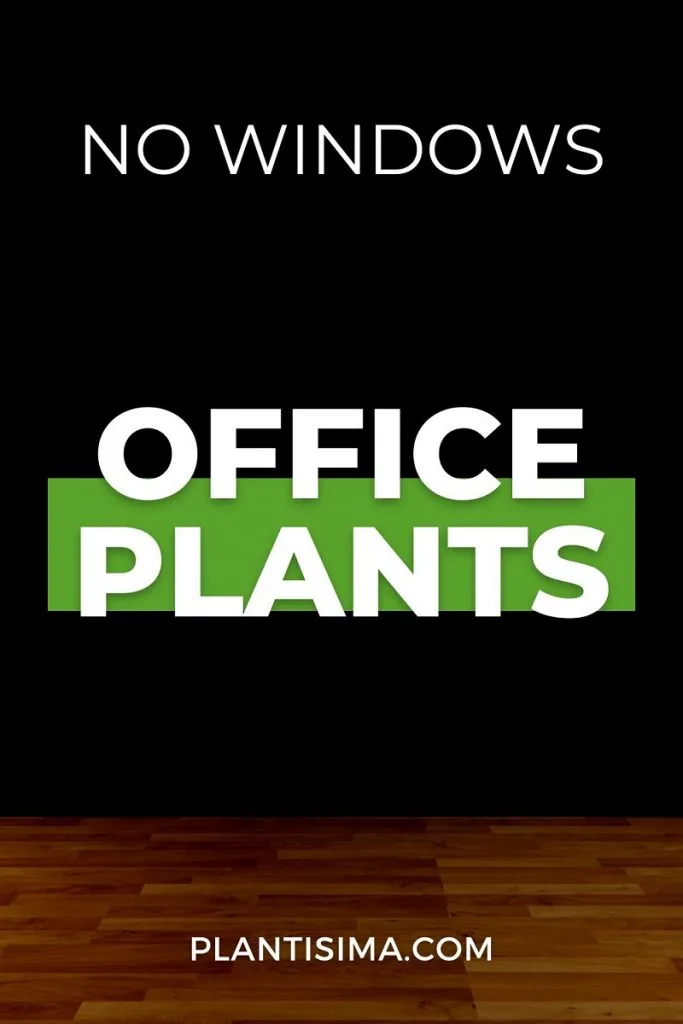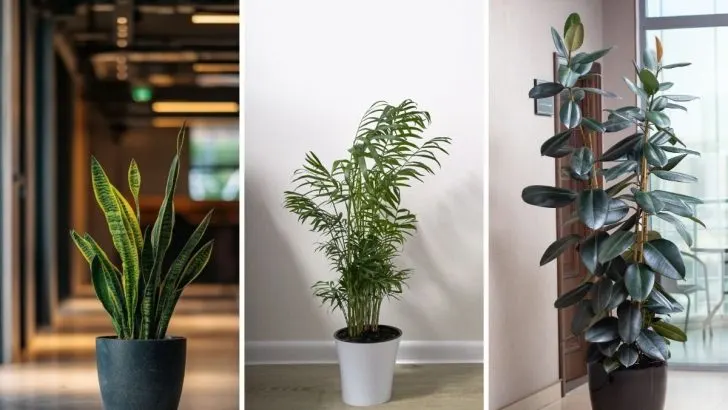Today we’re going to talk about the best plants for office with no windows, about 25 of them to be precise. Each one of these plants is a low-maintenance plant and growing it in an office with no windows won’t be a problem.
No matter which house plant (indoor plant) between these 25 you choose, you won’t regret it. They won’t be needy due to your office conditions and you’ll be more than happy to have them.
Wait until you see them: oh la la! With deep green foliage and dark green leaves, these plants are just amazing. No matter what is your office environment these plants thrive well.
Can You Have A (Tropical) Plant In A Windowless Office?
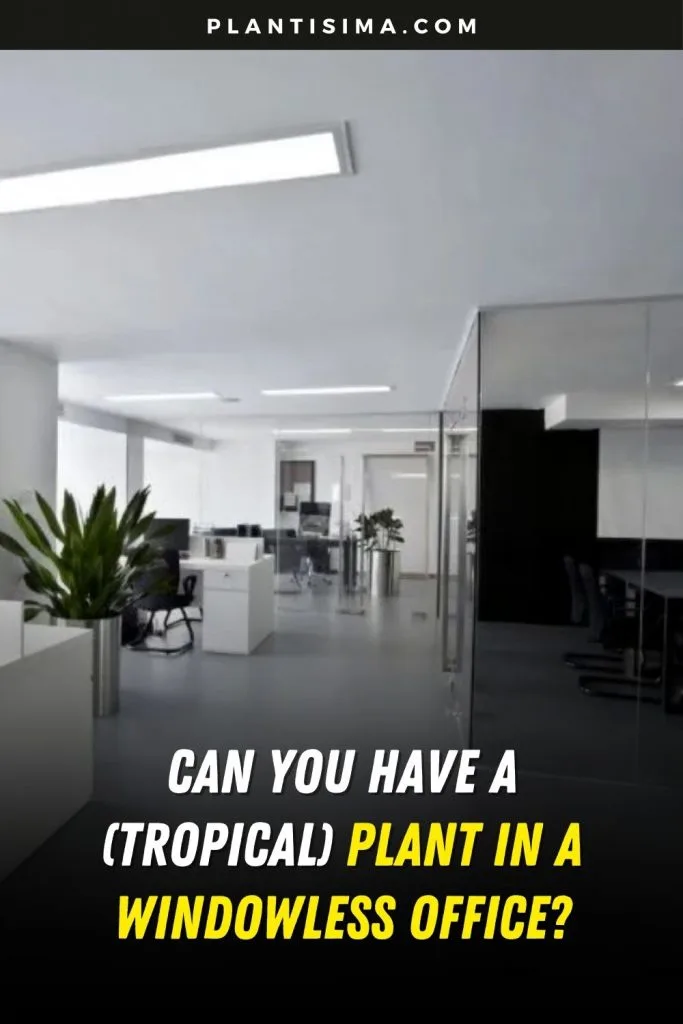
Even though many people think that plants need natural light and sun to produce flowers and do photosynthesize, many plants can thrive well with fluorescent lights and artificial lighting.
Medium to low light and no natural light at all isn’t always bad for some plants. Chinese evergreen, peace lily, and more can stand those conditions.
Some of them are even blooming plants and they can still grow healthily in such conditions. These office desk plants won’t disappoint you for sure!
Let’s do some reading!
Best Plants For Office With No Windows
1. Snake Plant (Mother In Law’s Tongue)
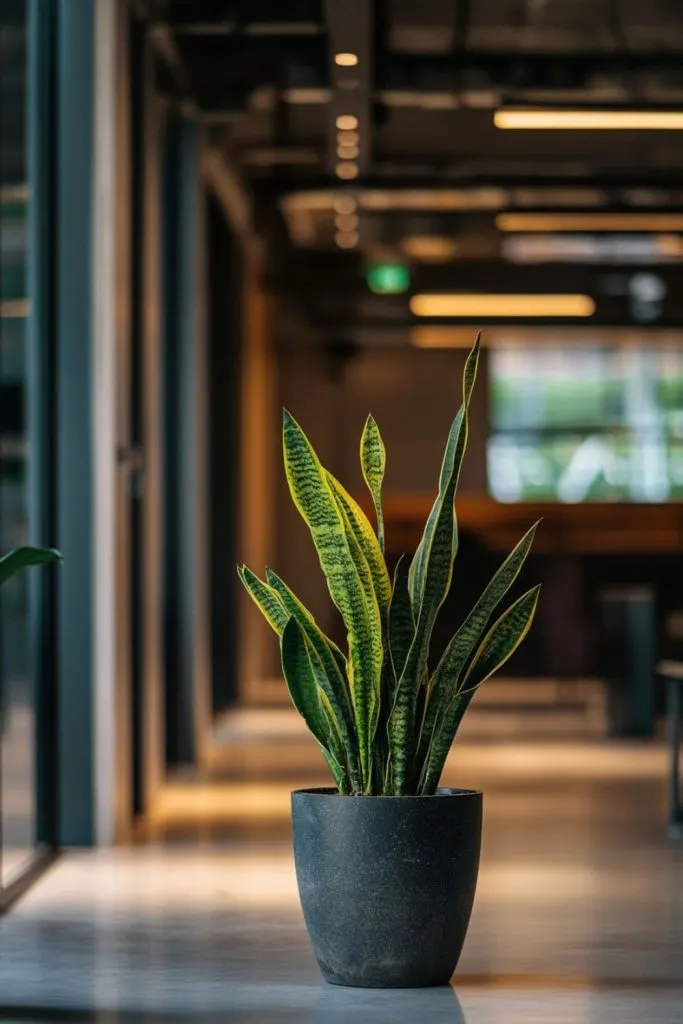
If there was an award available for the most tolerant plant, the snake plant (Sansevieria) would surely be one of the frontrunners. It is very similar to a spider plant.
Watering snake plants and caring for them is very simple. These plants can be neglected for weeks; yet, with their strappy leaves and architectural form, they still look fresh.
In addition, they can survive low light levels, and drought and have few problems with insects. NASA research has even shown that snake plants can help keep the air in your home clean by removing toxins like formaldehyde and benzene. In short, they are perfect indoor plants.
There are about 70 different species of snake plants, all native to tropical and subtropical regions of Europe, Africa, and Asia. All are evergreen and can grow anywhere from 10 inches to 15 feet.
The most commonly used species for gardening is Sansevieria trifasciata, often known as mother-in-law’s tongue. Why don’t you read more about snake plant as the perfect plant for beginners?
2. Peace Lily As One Of The Best Plants For Office With No Windows
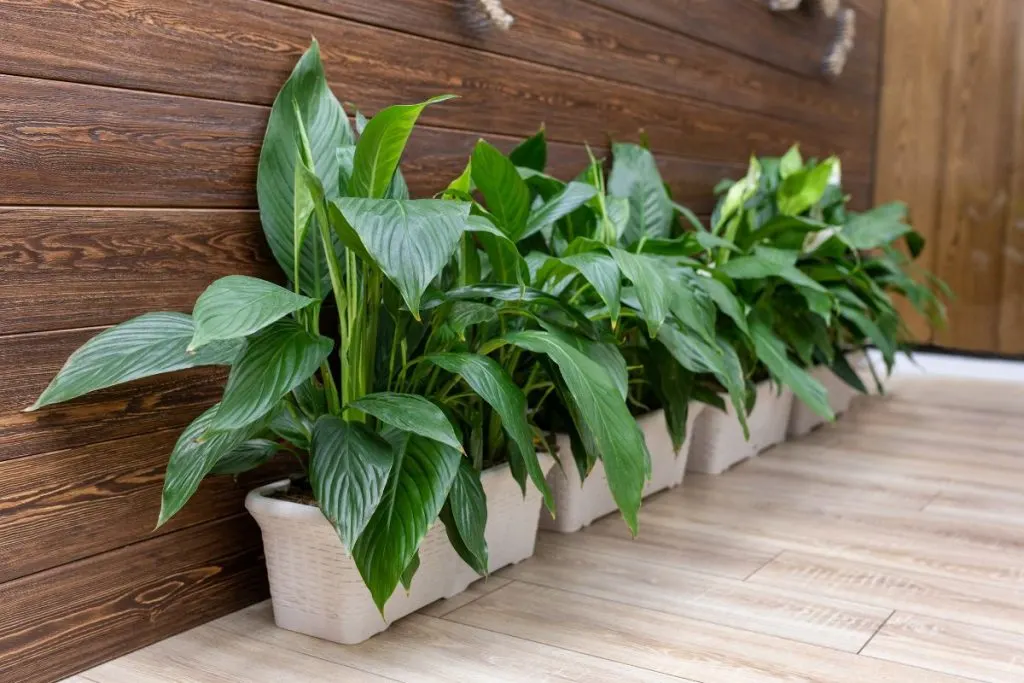
Peace lily (spatiphyll, spatiphyllum, or lady’s luck) is a hardy perennial plant native to Central and South America.
It is characterized by long, slightly bent green leaves and beautiful white flowers. There is a belief that this flower brings happiness to its owner.
There are claims that this flower has the ability to absorb electrostatic energy, which it then converts into chemical energy, so it is considered a “cleaner” from device radiation.
The peace lily is not demanding for cultivation and maintenance. It is enough to water it once or twice a week and it does not require much light. In order to prevent a lack of moisture, it is necessary to periodically spray the leaves with water.
It is best to place it in a semi-shady place, and since it absorbs radiation, it would ideally be next to an electronic device.
3. Zamioculcas Zamiifolia: The ZZ Plant
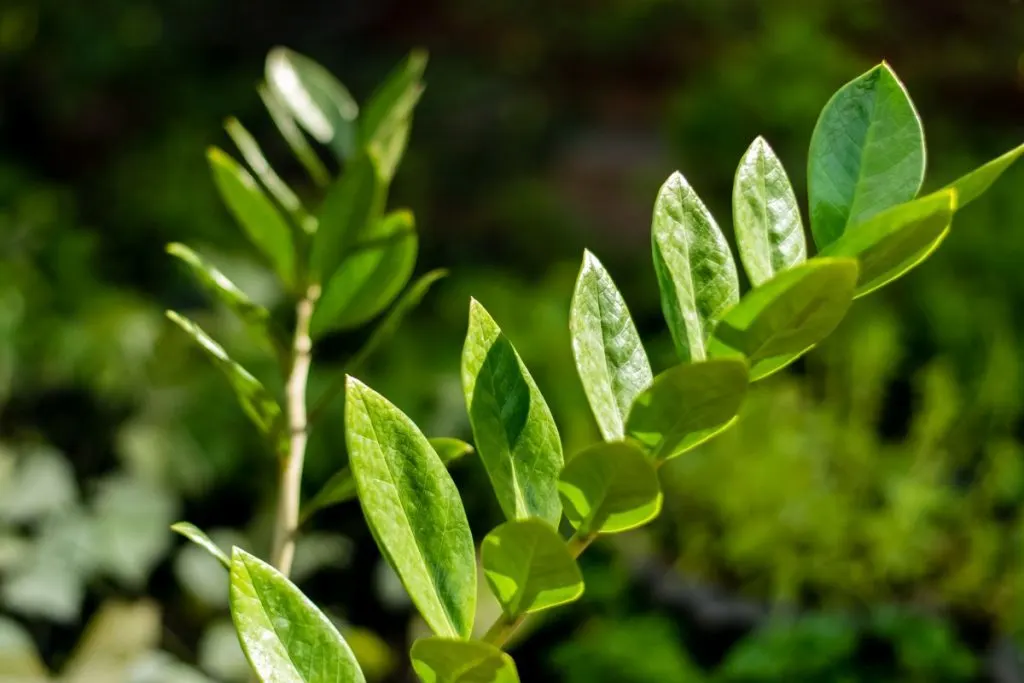
The ZZ plant has deep oval, deep green leaves that grow upwards. The leaves are so shiny and uniform in color that some people mistake them for fake. This plant is very easy to care for and can withstand drought.
In addition, it can handle various lighting conditions except for harsh direct sunlight. When the soil is almost dry, water it to protect the plants from the draft.
Easy to grow and care for these foliage flowering plants display small shiny leaves on their stems and can grow up to 3 feet long indoors. Zamioculcas zamiifolia grows well in dark and bright places and is not watered very often. What will happen to plants that are kept in the dark?
ZZ is a rhizome plant that is really fun to grow and display at home. Many say it’s slow growing. ZZ plants grow like trees and palm trees and have stems with many leaves growing from these stems.
The leaves are a fleshy type that is only a few inches long and about 1 inch wide. In case you have paw friends in your home, this plant (tree) is one of the indoor trees safe for cats.
4. Money Tree Plant
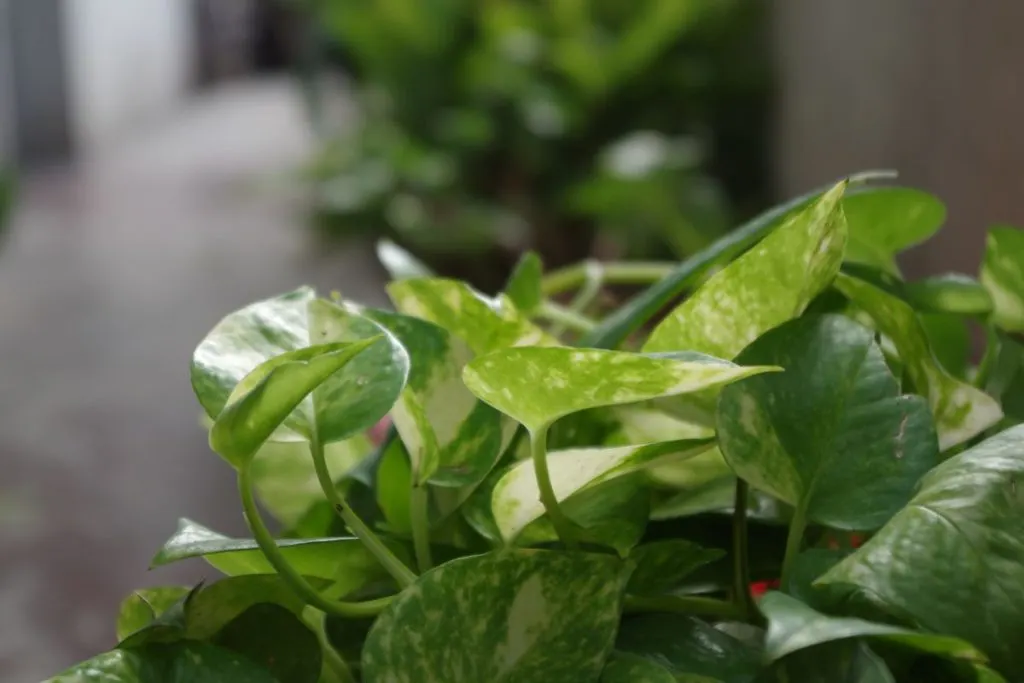
The money tree, also known as guinea nuts, is a type of tree native to Latin America, and its toughness makes it an attractive foliage plant.
The money tree, which first became popular as a foliage plant in Taiwan in the 1980s, is famous among people who practice Feng Shui and is thought to produce positive energy at home.
This alone has become a staple of offices, banks, and homes. Money Trees are most commonly sold as small plants with braided trunks consisting of 3, 5, or 7 trunks. Trees are woven in nurseries when they are young and continue to grow as they mature.
It’s rarely grown from seeds at home, but if you’re planting outdoors, consider starting with seeds in the spring. Trees grow rapidly both indoors and outdoors, often up to 24 inches high annually.
5. Lucky Bamboo As One Of Best Plants For Office With No Windows
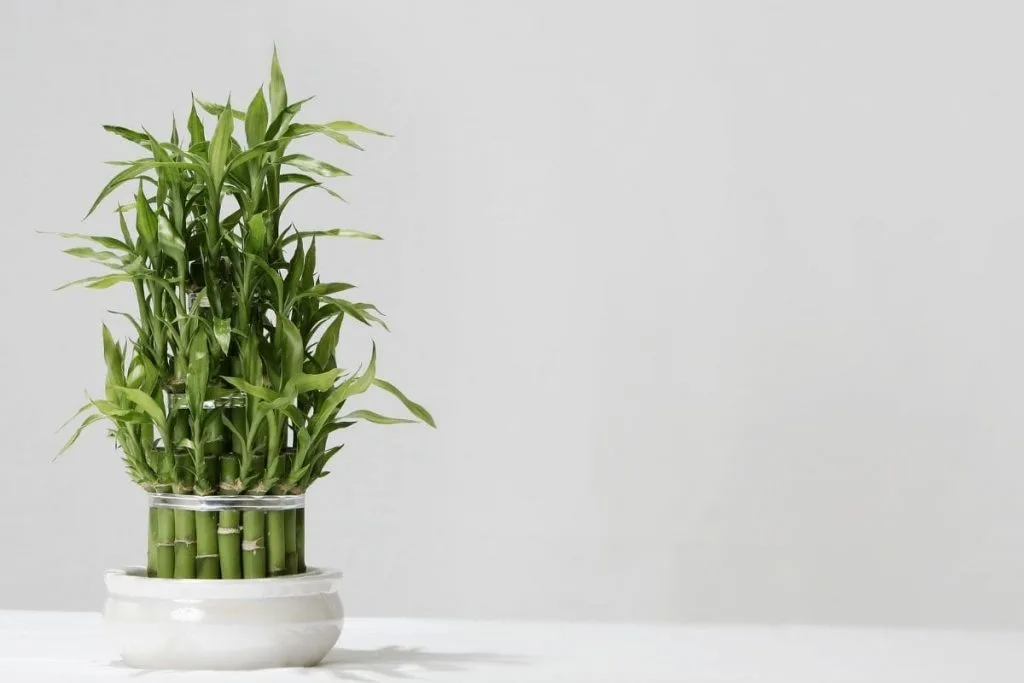
Lucky sculptural bamboo plants have striking shapes, swirls, or braided stems and are common in offices and homes due to good feng shui.
You can also train your stems to grow straight and be adorned with small, simple, supple green leaves.
The plant looks like bamboo and grows as fast as bamboo but it has nothing to do with it and is a succulent plant. Keep in mind that this plant is toxic to cats and dogs, so it is not fortunate for pets.
According to Chinese tradition, the meaning of lucky bamboo depends on the number of stems you have. Lucky bamboo arrangements have many meanings.
- Two stems represent love.
- The three stems represent Fu (luck), Lu (wealth), and Soh (long life).
- The five stems represent balance, peace, harmony, and strength in all areas of your life.
- The six stems represent good luck and wealth.
- The seven stems represent good health.
- Eight stems represent growth.
If you already own a lucky bamboo but are struggling with jaundice, black leaf ends, or something similar. Or the most common problem, lucky bamboo turning yellow. You will find more information about signals your plant is sending you on our page lucky bamboo turning yellow.
6. Peacock Plant
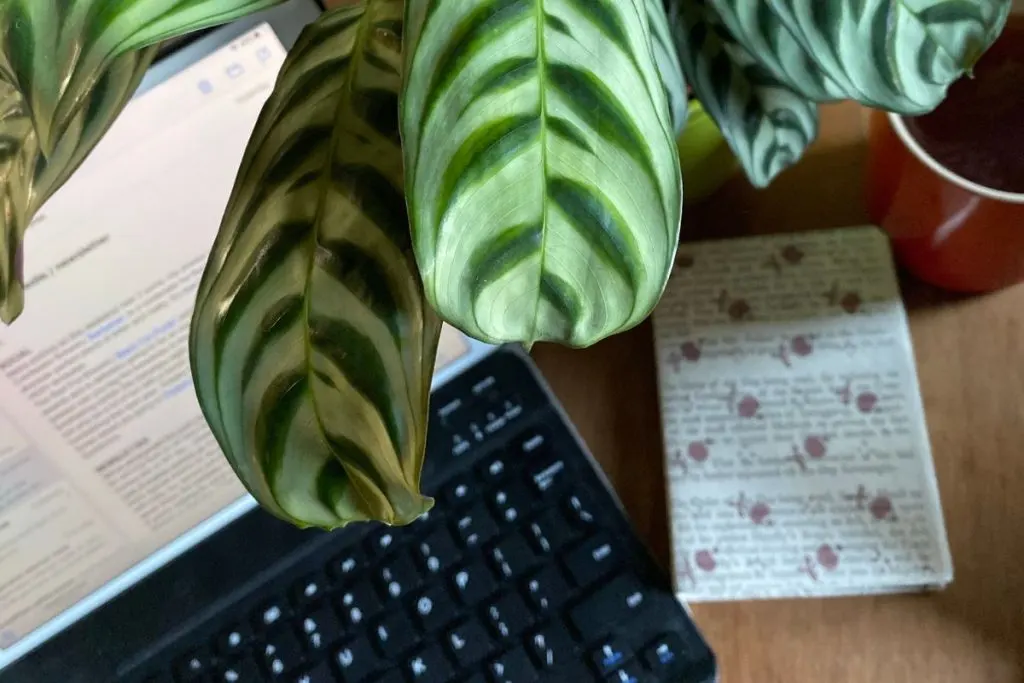
They are known for their beautiful leaves and are sometimes called “prayer plants” because the leaves rise and dry at night. Calathea Makoyana is often marketed as a tropical houseplant.
The umbrella calathea is sometimes called a peacock plant, but it is officially known by its common name Makoyana.
This is because the pattern on the broad leaves resembles the tail feathers of a famous bird, attracting attention.
The leaf pattern has different shades such as green, cream, pink, white, and gray. The stems are always reddish brown and the undersides of the leaves are dark purple.
This actually matches the pattern on the leaf blades of this strain. If you like pretty flowers, then peacock plants are not for you. They bloom, but they are very small and of no decorative importance.
7. Cast Iron Plant
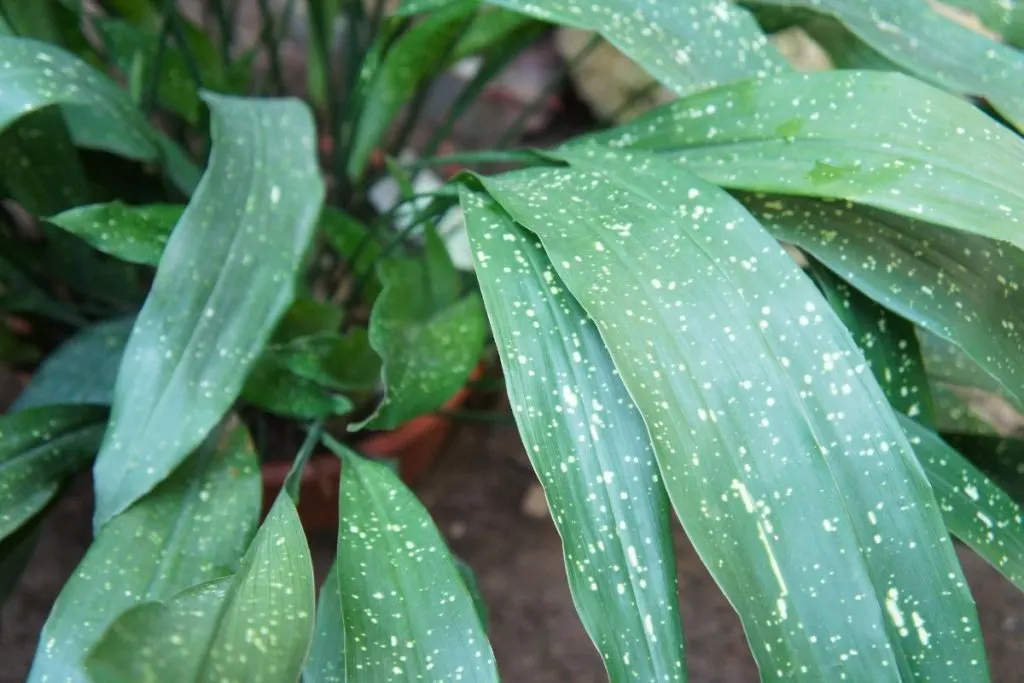
Cast iron plants (Aspidistra elatior) have a reputation as hard-to-kill foliage plants and are beautiful foliage plants outdoors in their growing areas. This plant can withstand many negligence and growth conditions that kill many other plants, including poor lighting conditions.
It has arched spear-shaped dark green shiny leaves that grow to about 2 feet long and 4 inches wide. When grown outdoors, slight cream or purple flowers may bloom near the roots of the plant.
When grown indoors, the flowers usually do not appear. Cast iron plants grow very slowly, and spring is generally the best time to plant them.
8. Cactus Plant As One Of Best Plants For Office With No Windows
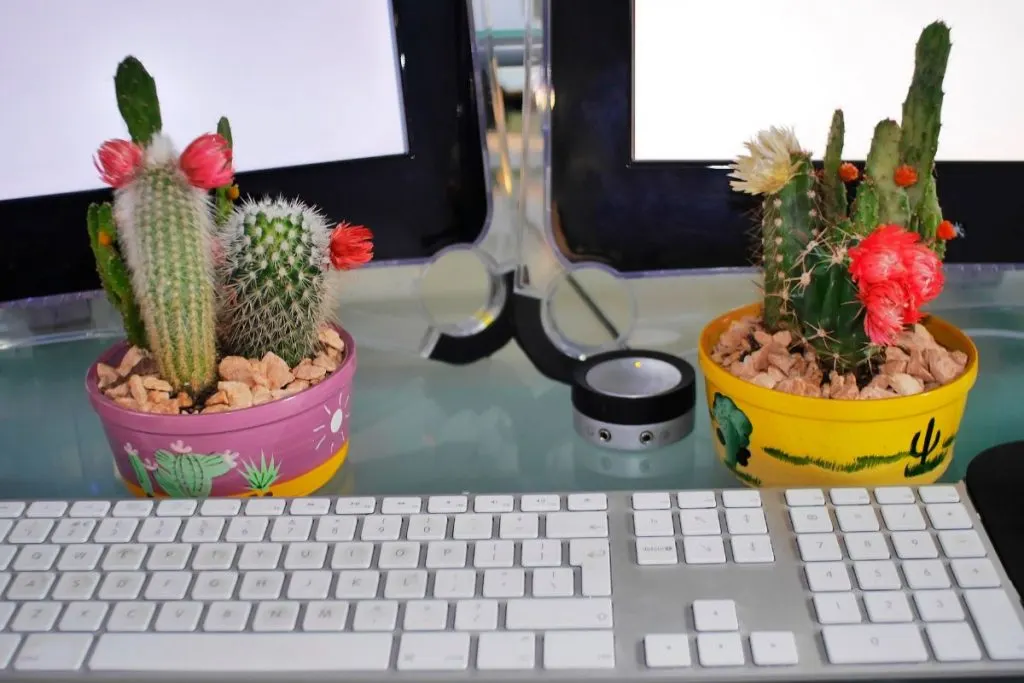
There are thousands of species of wild cacti, including two major groups of cacti that grow as foliage plants: desert cacti and forest cacti.
Both groups are relatively maintenance-friendly and thrive indoors, come in a variety of sizes, and small and medium-sized varieties are the most popular.
Desert cacti usually have thorns and hairs and are shaped like paddles, spheres, and obelisks. Forest cacti come from the subtropical region.
It resembles other succulents such as ananas and grows in temperate forests and subtropical and tropical regions.
They are mountaineering or epiphytes that cling to wild trees and make excellent hanging foliage plants.
The most well-known ornamental forest cactus is a Christmas cactus native to Brazil, which blooms in red, pink, purple, and yellow.
Both desert and forest cacti are slow-growing, beautifully flowered and some of the toughest of all foliage plants.
9. Parlor Palm
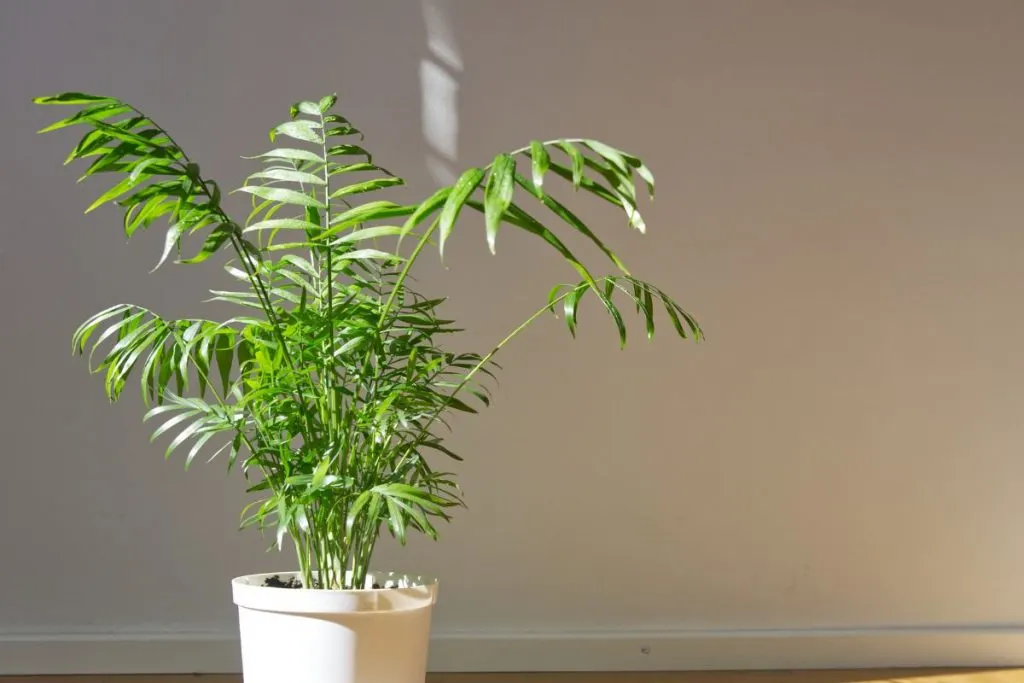
House parlor palms (Chamaedorea elegans) have long been used as foliage plants. This beautiful plant with deep green leaves was first discovered in Central America, brought back to the United States, and soon became a popular home palm.
It grows in attractive clusters with lightly textured leaves that cover thin stems. It may be possible to find a single stem specimen.
The palms usually grow in small groups and resemble shrubs like the palms of attractive pots. The leaves are popular in flower arrangements.
Palm Parlor decorations and garlands can survive up to 40 days after being cut from the plant. Parlor palms are slow growing and can take several years to reach full height.
10. Prayer Plant
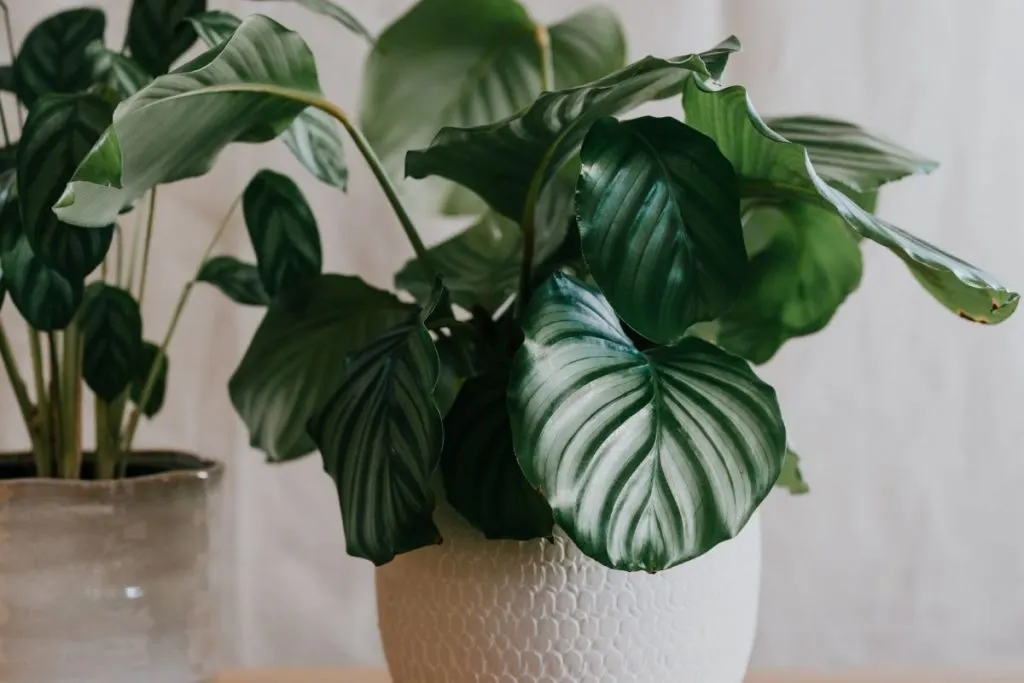
Named after the 16th-century Italian doctor and botanist Bartolomeo Maranta, the genus Maranta contains dozens of low-growth plants native to Brazil, including the prayer plant.
The leaves are flattened during the day and folded to pray at night, hence the name. Thanks to its beautiful decorative leaves, the prayer plant is one of the most distinctive tropical plants.
A popular tricolor variety is dark green velvety leaves with yellow spots along the midribs and scalloped red veins running towards the edges of the leaves. The prayer plant grows slowly and can eventually reach a height of 15 inches indoors.
They are fairly common as houseplants and can be planted and cared for indoors at any time of the year, but they are not always easy to maintain in the long run.
11. Aglaonema Plant
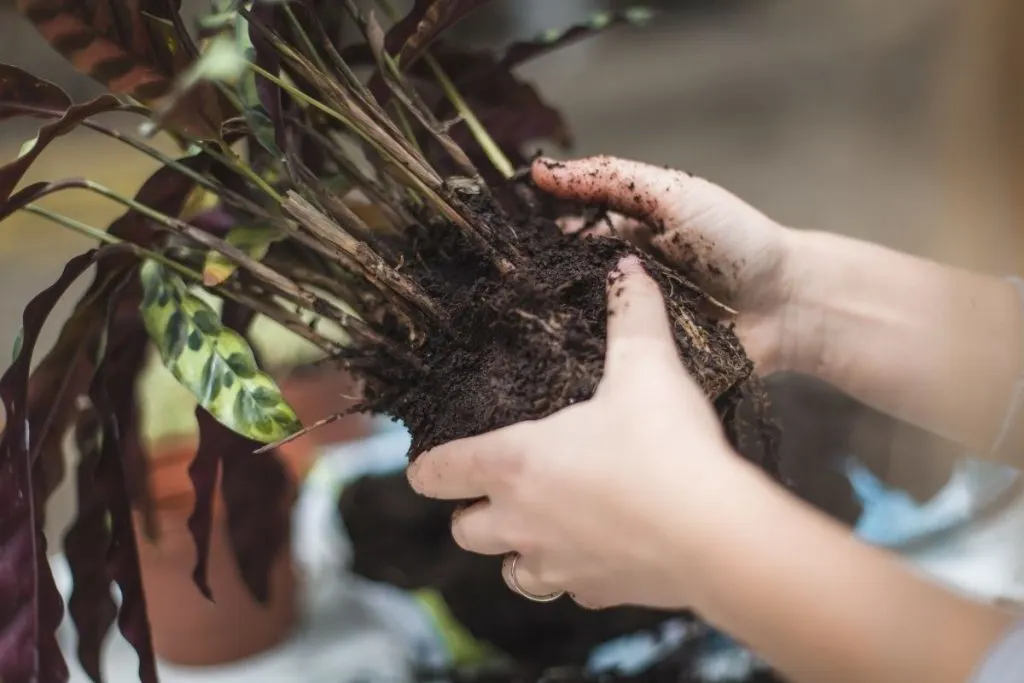
Aglaonema is the flagship of the most popular houseplant list everywhere! With its unique, lush foliage, easy care, and ability to adapt to almost any home or office space, it’s hard to find a more versatile wonder.
This plant commonly referred to as the “Chinese periwinkle,” grows naturally on the tropical forest floors of Asia and is highly valued for its location in indirect light, as direct sunlight can burn its leaves.
Ideally, it should be a few feet away from bright windows that can receive bright, diffused light. However, some aglaonema varieties can withstand lower light levels and fluorescent lighting conditions.
12. Arrowhead Plant
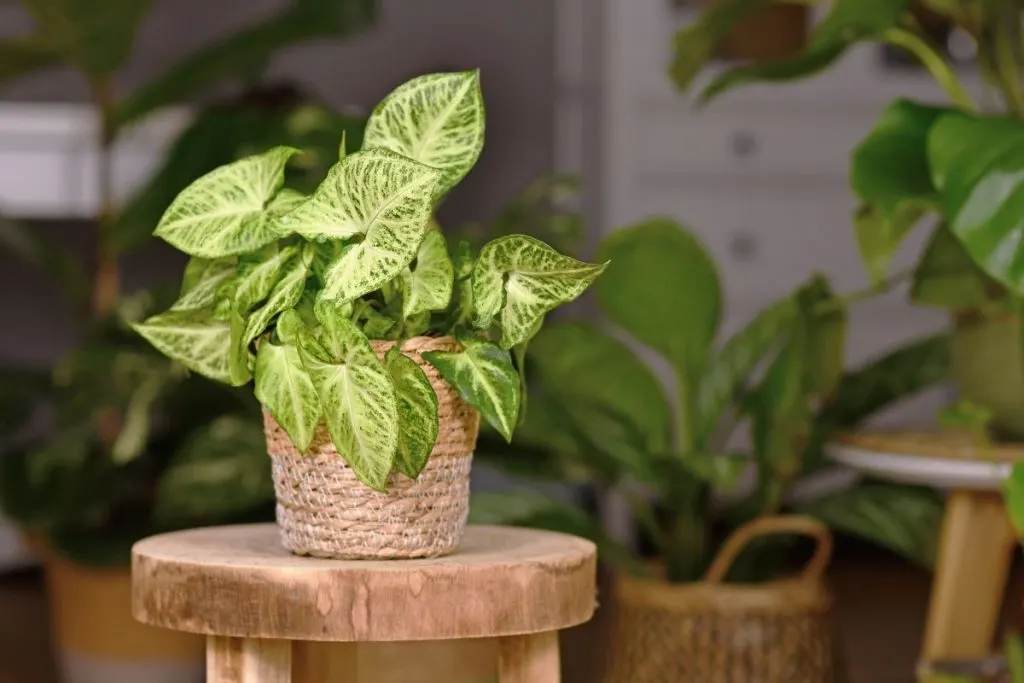
Other common names include arrowhead vine, Arrowhead philodendron, goosefoot, neftitis, and African evergreens make excellent office plants well adapted to fluorescent spaces.
These plants like moisture and benefit from the occasional fog. If you want to turn an arrowhead plant into a vine, bring a trellis or pole for support. You can even guide them to climb the office bulletin board.
13. Bird’s Nest Fern Plant
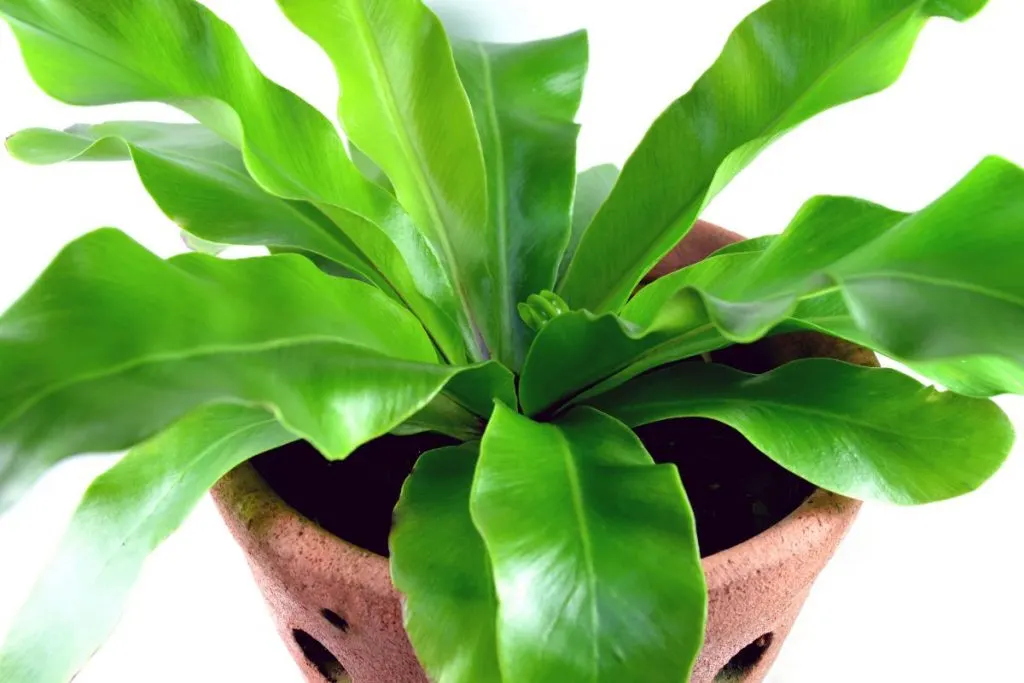
Also known simply as Nest Fern. This tropical plant grows naturally in the shade of tall plants and trees and cannot survive in direct sunlight.
Instead, they prefer indirect light. Therefore, if your office has little natural light, the Bird’s Nest fern is the best choice. Also, it can be grown only with artificial light. Nest ferns prefer moisture, so lightly mist or use a humidifier.
14. Tillandsia Plant
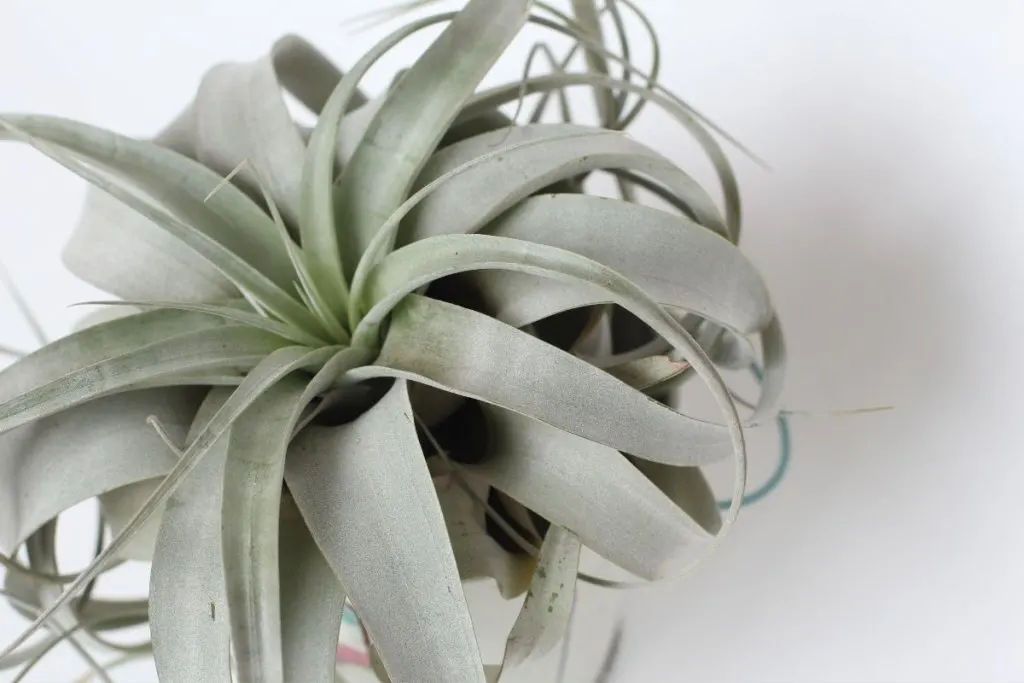
This species of the genus Tillandsia is rare and can only be found in the highlands of Peru. In their natural habitat, they cling to rocks and cacti and are distinguished by bright, sage-green leaves.
These air plants are covered with small hairs that give the leaves a soft texture. Tillandsia cacticola grows tall stems and pumps out its spreading leaves, creating a beautiful wild display.
The leaves are usually curved and pointing downwards. This air plant produces small white flowers with tall purple bracts and purple rims that definitely stand out from other plants. Flowers last for months.
15. Peperomia Plants
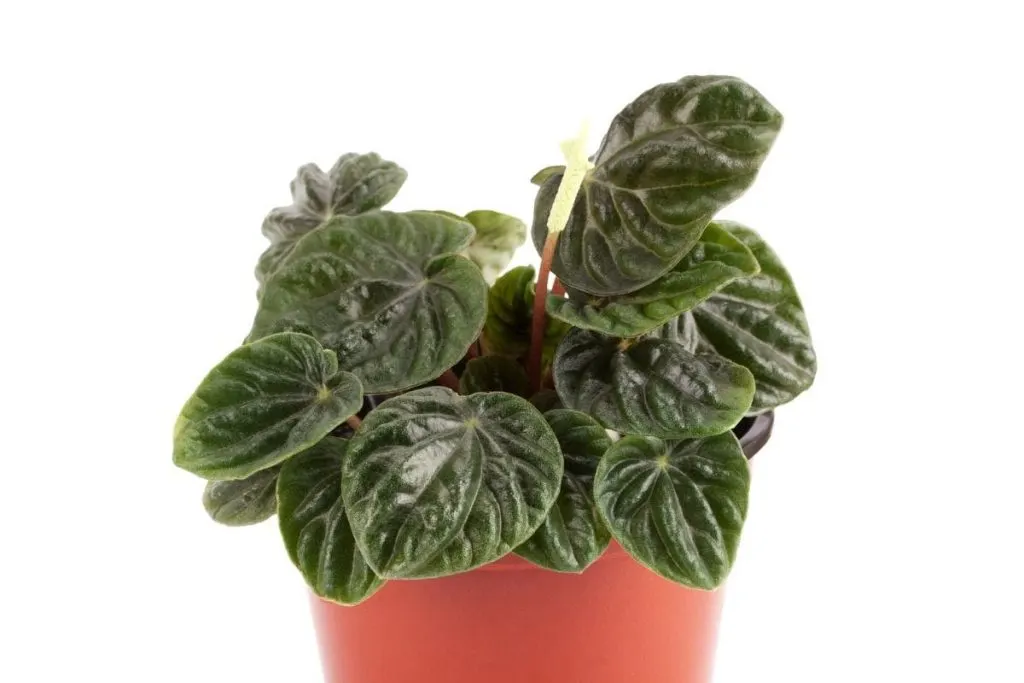
Peperomia plants belong to a wonderful genus of tropical plants native to Mexico, South America, and the Caribbean Sea.
With over 1,000 known species, these vibrant plants have thick, fleshy leaves that contribute to drought tolerance and vitality.
Flowering If you are not very lucky with the foliage plants, you can understand that the foliage plants are in bloom in Peperomia.
Its leaves can be red, green, gray, or purple textured or smoothed. Versatile, marble or solid; large, heart-shaped or small.
Plants of the genus Peperomia can look very different, so it is difficult to determine if they are totally related. All peperomia plants are easy to care for, slow growing, and can be planted all year round.
16. Bromeliads Plants
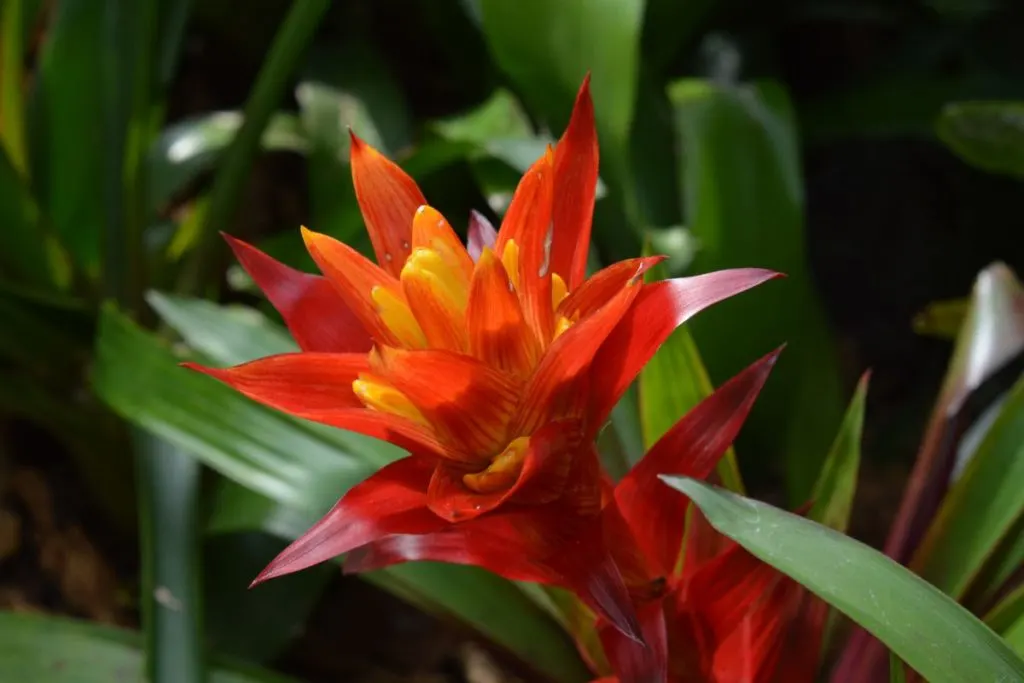
Bromeliads may seem difficult to grow, but their amazing array of colors and textures makes it easy to adapt to average living conditions.
Many have very bright flowers, but bromeliad is as popular as beautiful houseplants, with red, green, purple, orange, and yellow leaves, characterized by bands, stripes, and spots.
This plant is a relatively slow-growing plant that takes 1-3 years to mature into a flowering plant.
Bromeliad Florida: Colorful Showy Foliage Care Guide
17. Lady Palm Plant
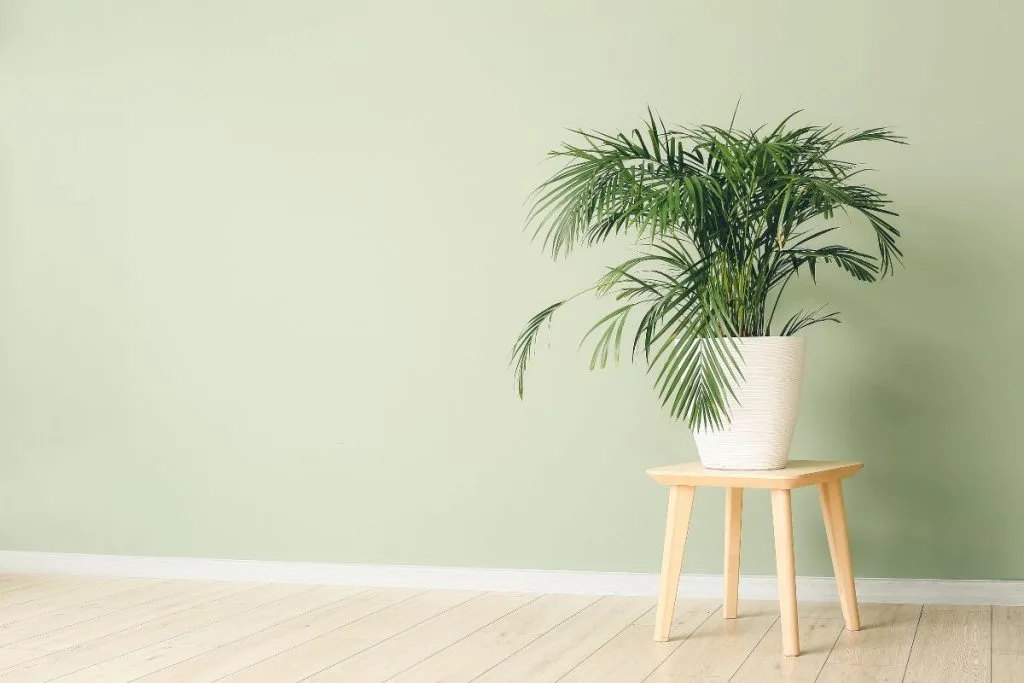
Broadleaf lady palm (Rhapis excelsa) is a small species of palm that grows in a dense mass of thin, upright green stems. The stems are fan-shaped shiny green leaves, each with 5-8 thin lanceolate segments.
This palm is very resistant to low light conditions and is popular for growing indoors as a houseplant.
Houseplants can generally be started all year round, but it is best planted in the spring at the beginning of the growing season. This palm grows fairly slowly, with a height of less than a foot per year.
18. Spider Plant – Best Plants For Office With No Windows
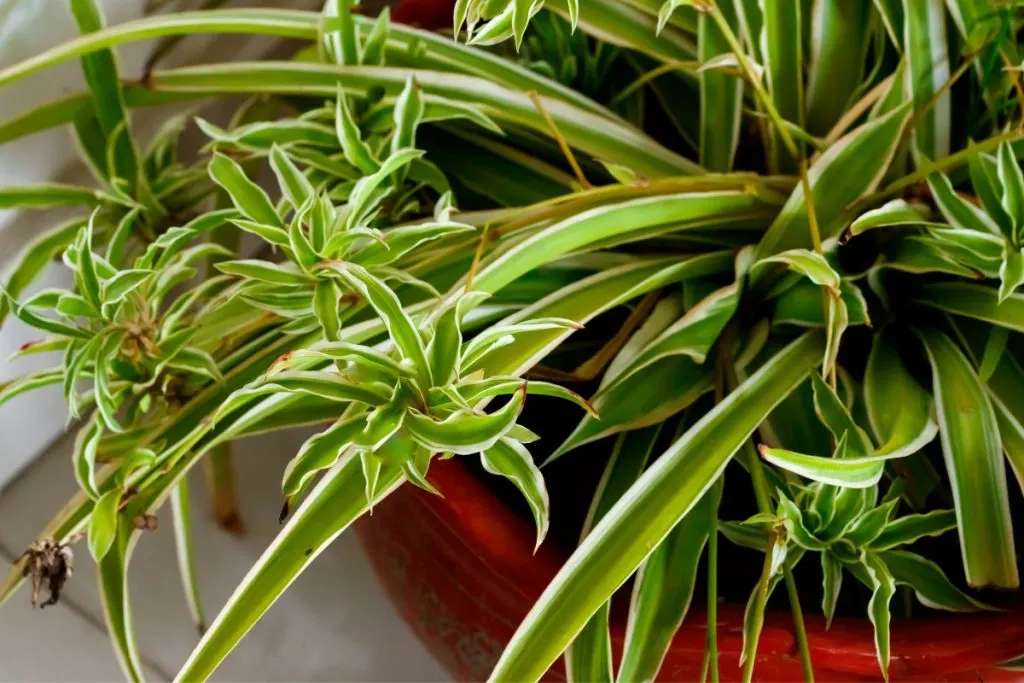
Despite its eerie name, the spider plant (Chlorophytum comosum) is one of the most popular houseplants. When grown indoors, these perennials survive in less than perfect conditions in warm weather.
These perennials are great if they can faithfully mimic the natural tropical environment by providing warm temperatures and moist air. These plants form elongated leaf rosettes ranging in length from about 12 to 18 inches.
The leaves can be green or green and white striped. Mature plants regularly send out long stems with small star-shaped flowers.
When a flower is fertilized, it produces small fruits. When the flowers fall, small vegetation can replace them, eventually developing their own roots and cutting them into newly potted plants.
19. Dieffenbachia Plant
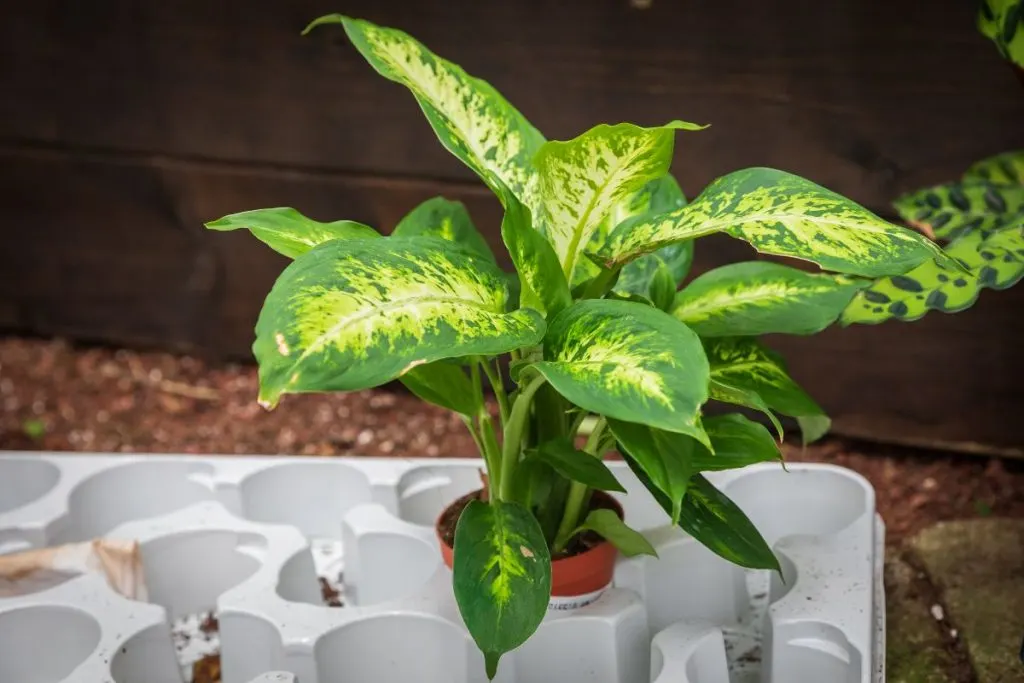
Dumb canes refer to oval leaves in various combinations of green, cream, and white colors. The large and well-grown Dumb canes reach 10 feet and the leaves are 20 inches long.
However, plants rarely reach this size under common indoor conditions, where 3-5 feet are more common.
Dumb canes are fast-growing plants that, with sufficient light, can reach a height of two feet within a year of planting rooted reapers.
The name “Dam Cane” is not popular as a derogatory term, but it was so named because the plant is highly toxic to humans, dogs, and cats. Other plants that you can try are the dieffenbachia reflector and others.
20. Ficus Plants As Best Plants For Office With No Windows
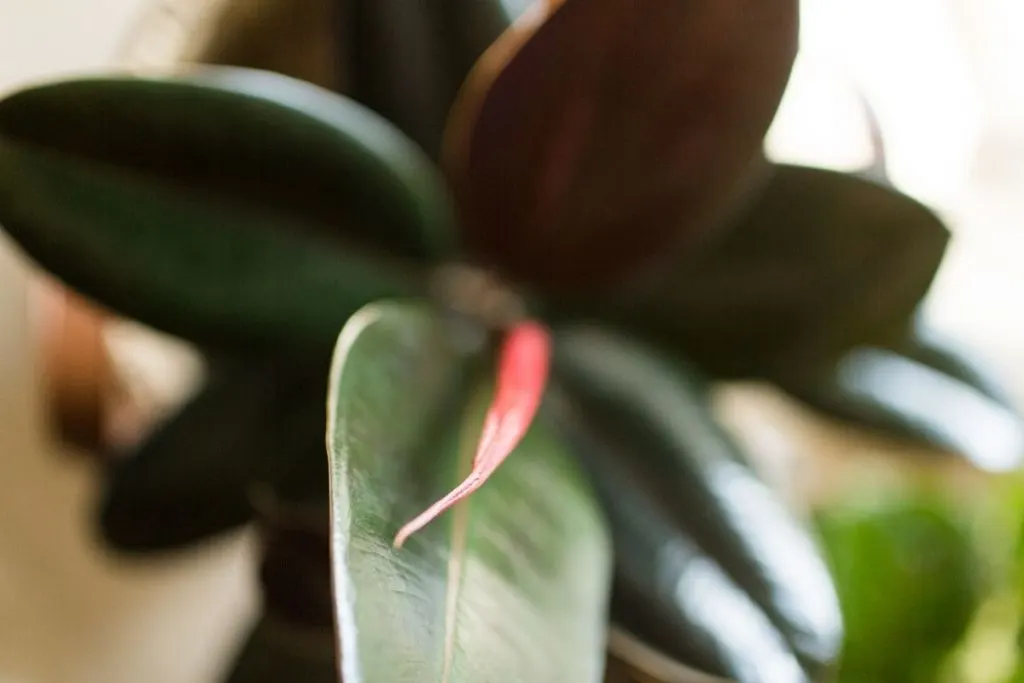
The fig tree may look like a simple plant with narrow, hanging, shiny green leaves, but it is a tropical specimen with very specific growth requirements. Grumpy, but few plants are as flexible as figs.
In fact, F. Benjamina is popular among bonsai growers because it can be knitted and shaped. Fig trees in your home or landscape usually grow into small shrubs and trees. In spring, it is best to plant the focus root ball directly on the ground.
It’s a fast-growing tree. New growth usually appears in a few weeks. The sap of fig trees is toxic to humans and pets.
In this text, you will learn everything you need to know about the most interesting ficus plant types.
21. Manjula Pothos
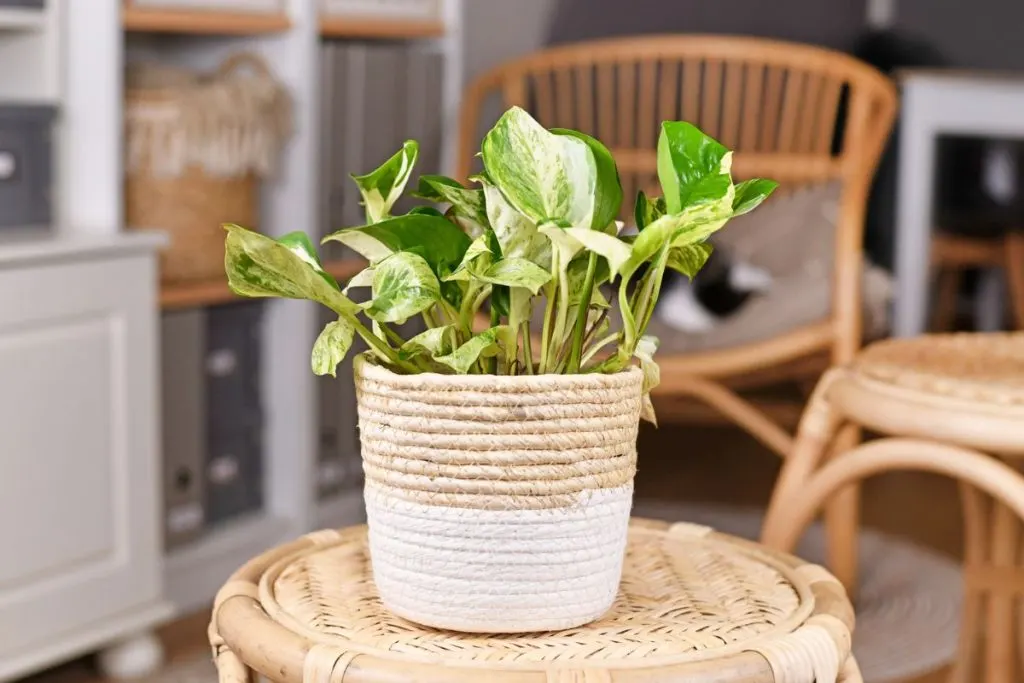
Perhaps one of the most striking Potos varieties in existence, Manjula Pothos features large heart-shaped leaves with stunning white, green, and cream variegations.
Compared to other types of pothos, Manjula pothos is difficult to obtain due to their rarity. You may need to shop at a rare botanical store or contact a collector to get one, but if you can find it, Manjula pothos will add beautiful and low maintenance to any home.
Unfortunately, Manjula pothos is toxic to humans, cats, and dogs when ingested 1. Keep this plant out of the reach of curious babies seeking hands.
22. Philodendron Plants
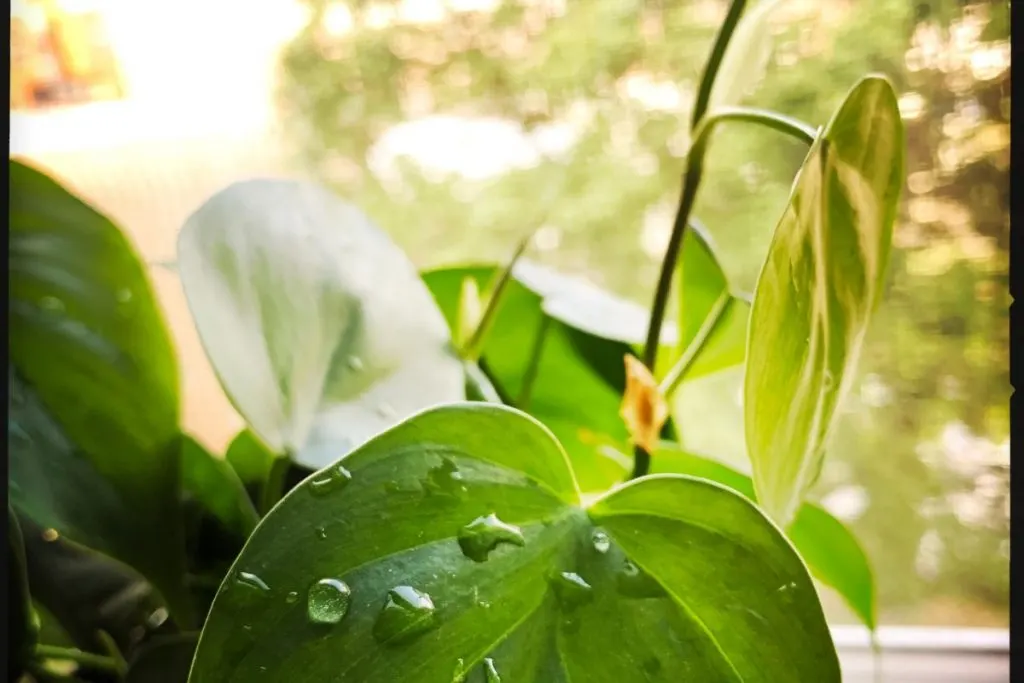
The genus Philodendron contains hundreds of beautiful foliage plants. Their leaves are usually large, green, and shiny, and Philodendron is perfect for adding a bit of their native tropical feel to your home.
These popular foliage plants are known for their easy-to-grow habits, and you can choose between two types of philodendron, mountaineering, and non-climbing.
Cultivars of vines grow to a height of a few feet and usually require climbing support structures such as scaffolding.
Around trellis or basket. Non-climbing varieties grow upright and produce excellent leaves for containers. In general, philodendron has a fast growth rate.
Philodendron is also an excellent botanical choice for purifying the air in your home. They are best planted in the spring, but foliage plants can usually start with success at any time of the year.
Want to know more about Philodendron Plants? Here can you find everything that you need to know about Neon Philodendron and Philodendron white knight.
23. String Of Turtles
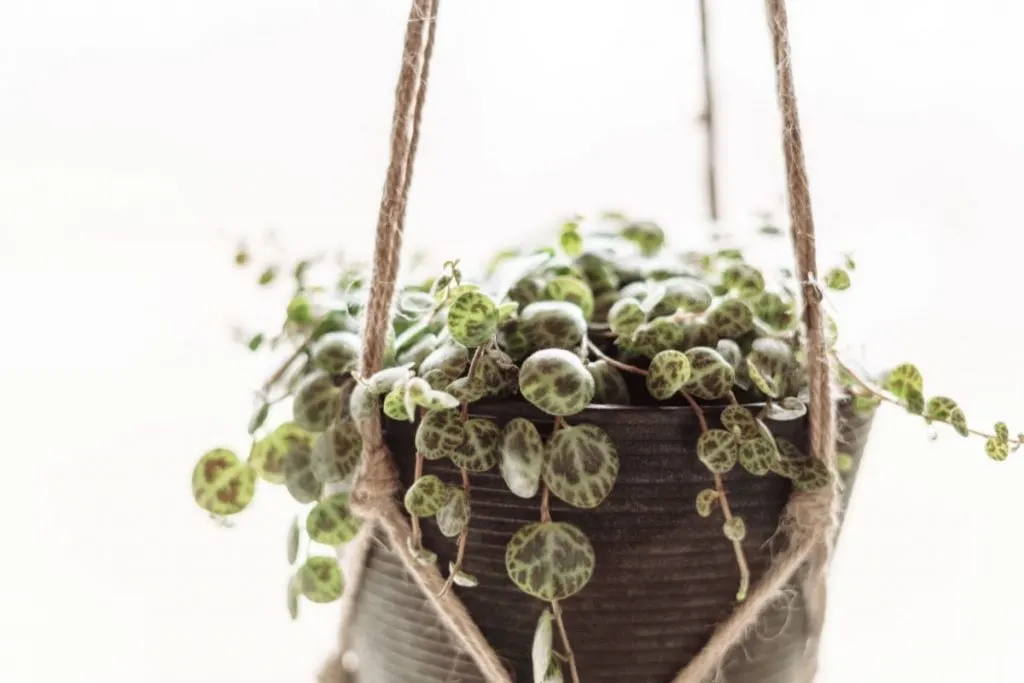
The chain turtle (Peperomia prostrata) is a small succulent plant that grows naturally in the Brazilian rainforest and thrives in warm climates, but adapts well to average household conditions.
For this reason, it is a popular plant in the jungle of foliage plant collections and apartments around the world. Small and slow growing, fully mature in 3-5 years. If you don’t have enough space, a turtleneck is the best choice.
The attractive leaf shape of the plant is also popular for use in fairy gardens, container gardens, and terrariums. This is a great hanging plant and of the easiest house plants.
No matter how it is used, the uniqueness of Peperomia prostrata makes it a valuable addition to the collection of foliage plants and a wonderful piece of conversation.
24. Silver Satin Plant
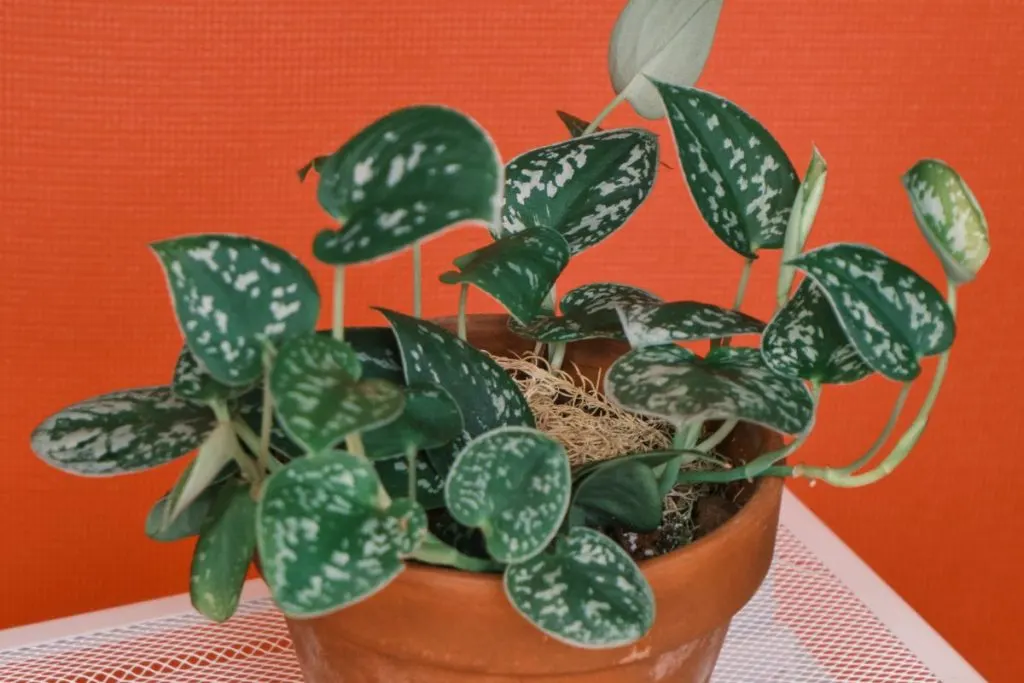
Satin pox (Scindapsus pictus) is one of the easiest indoor plants to grow, just like its relative, the chicken pox (Epipremnum aureum). Both are members of the Arum family.
They are evergreen tropical vines that are not cold-hardy. Therefore, pothos are usually grown indoors. What distinguishes satin pothos from pothos is the variety of leaves.
The heart-shaped leaves have silver-gray spots that give the plant an almost shiny appearance. The power of diversity depends on diversity.
Satin pots are vines that cling to their surroundings, which can be posts, trellises, other plants, walls or furniture. The vine attaches itself to the surface by aerial roots.
25. Fig Tree Plant As One Of Best Plants For Office With No Windows
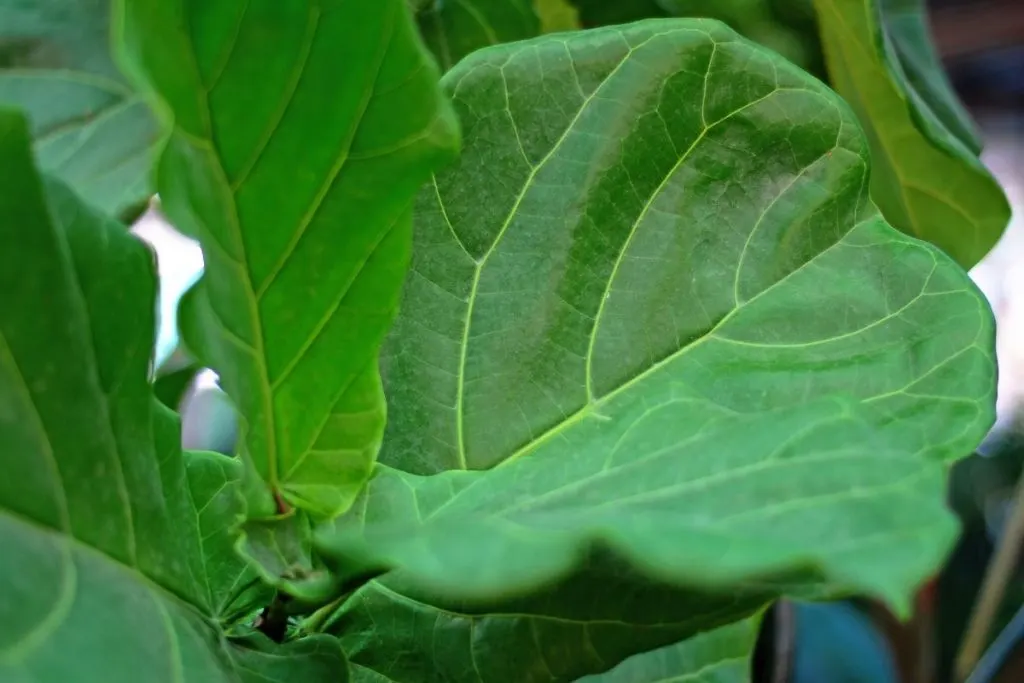
People all over the world have enjoyed figs as delicious sweets for thousands of years. The history of figs can be traced back to 5000 BC. Also, some historians consider figs to be one of the first domesticated crops.
The fig is derived from the common fig tree or the edible fig tree and is part of the genus of about 1,000 tree species of the quail family. Most trees in the genus are giant tropical trees that produce latex rather than fruit.
As a result, moving to supermarkets and major retailers will not work. The best way to enjoy figs is to buy them from the farmer’s market or, better yet, grow your own figs.
Is It A Problem If These Indoor Plants Don’t Get Natural Light?
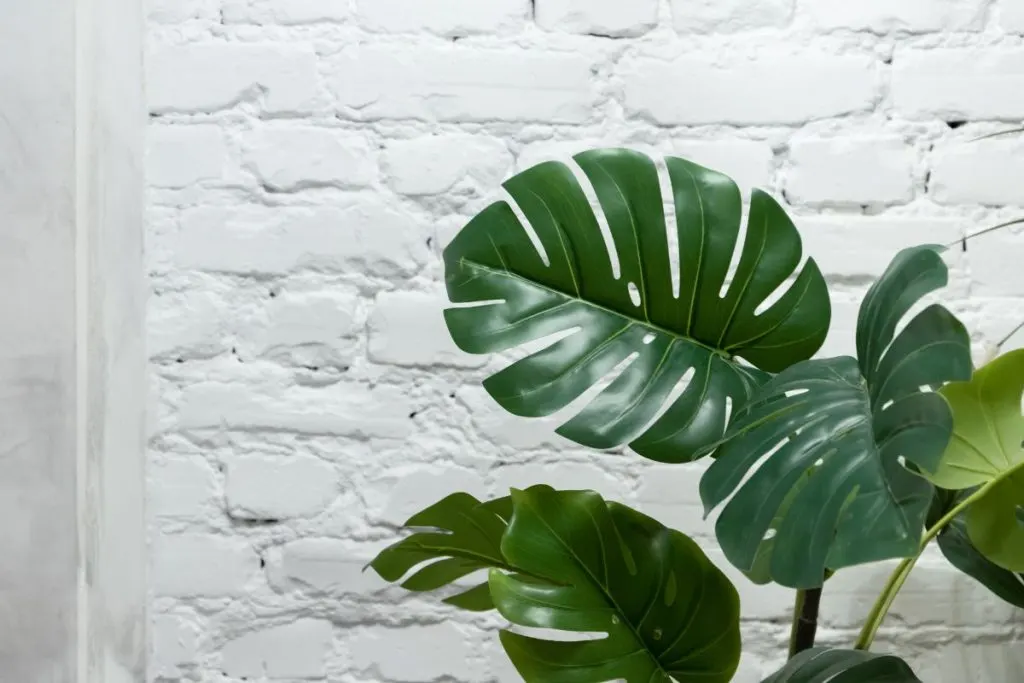
Natural light isn’t a “must” for all the plants out there. Some plants work well in fluorescent light conditions as well. You will still get a great plant with no natural light.
Some people think that this can affect its looks, but that is not true. As long as there are other good factors such as air quality, moist soil etc, your peace lilies, spider plants, and others, will grow perfectly fine! These plants are low-light plants anyway.
What Plant Is The Best For Office Desk?

There is no such thing as an ideal plant for your office desk. I wish there was, but I can’t tell you that. A popular indoor plant for the office is a snake plant. This plant stands low light the best and it is also a drought tolerant plant.
Maybe, most people like it because of its simple look, but as with any other house plants, it’s all in your own taste in something, in this case, in plants.
Many indoor plants are great for the office desk, so you choose the one that suits you the most!
Are Succulent Plants Good For Windowless Offices?
No matter what some people say, succulent plants are good plants for offices with no windows. There is a dilemma between other factors you should pay attention to.
You’ll have to provide them with a good fertilizer and enough water so they can keep thriving in low light conditions. If you want a good office plant, succulents are a great choice!
What Kind Of Plants Can Grow In Office With No Windows?
Most plants that you would grow in your home in bright light, or in shade are the plants that can survive and grow in an office with no windows. Some of those plants are succulents as we wrote above. They are in general low maintenance plants.
- Spathiphyllum
- Pothos
- Philodendrons
- Sansevieria
- Aglaonema
- ZZ Plant and many more.
Final Thoughts On Best Plants For Office With No Windows

Keeping plants alive in an office with no windows once sounded hard right? Now that you’ve read this article I’m positive that you’re more than confident and ready to purchase some.
Each one of these 25 office plants will grow healthily and happily in your office with no windows.
Hope you’ve learned about the best plants for office with no windows features, and interesting facts about them, and of course, you can always check our site to see if we wrote about their care guides as well.
Since you’re planning to buy them, I’m sure that care guides would be handy. Keep their soil moisture, not too much because we don’t want root rot, keep their air clear and these plants will keep growing.
That would be all for today! See you soon!
